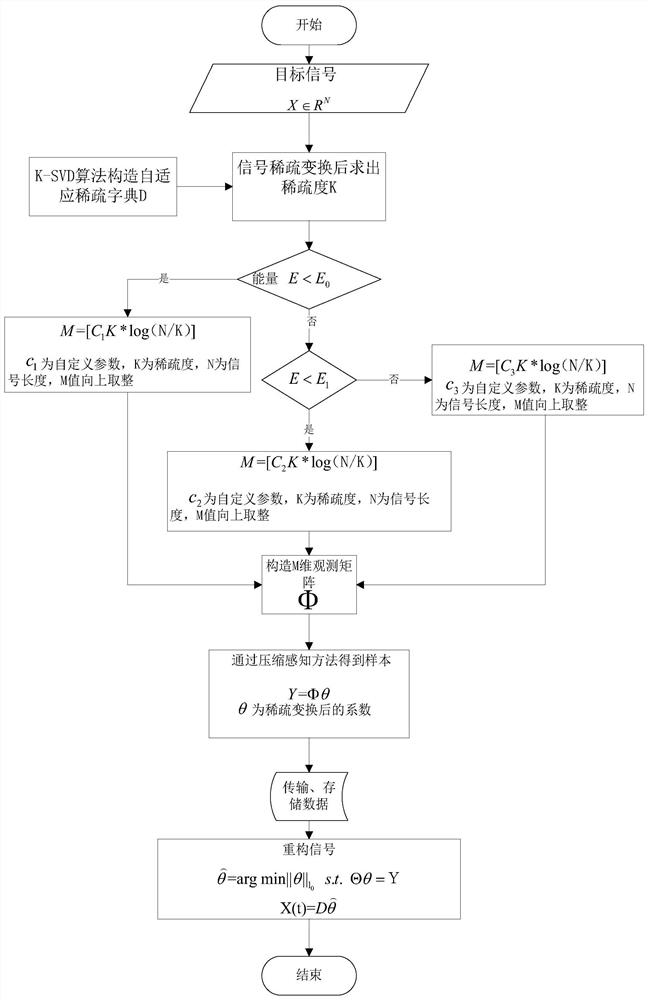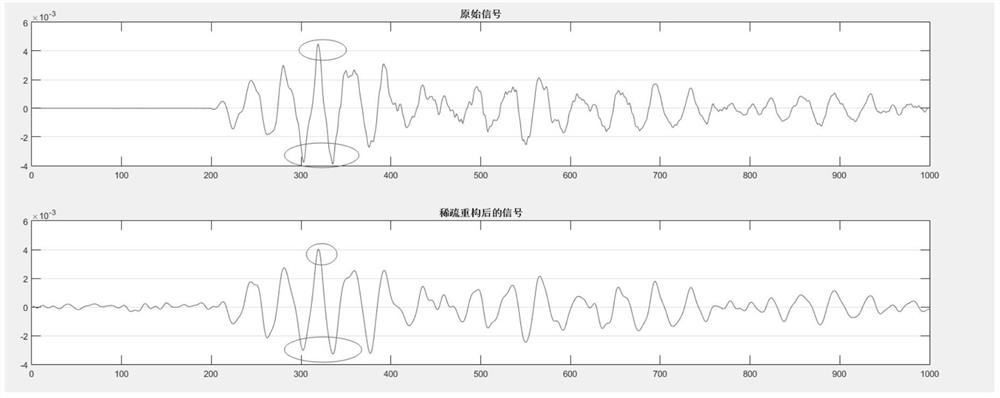A Compressed Sensing Method for Adaptive Microseismic Data Based on Dictionary Learning
A dictionary learning and data compression technology, applied in the field of signal processing, can solve problems such as unsatisfactory effects, peak deviation of microseismic signals, and inability to adjust adaptively, achieving good technical value and application prospects, ideal effects, and reducing storage and transmission pressure. Effect
- Summary
- Abstract
- Description
- Claims
- Application Information
AI Technical Summary
Problems solved by technology
Method used
Image
Examples
Embodiment Construction
[0062] Below in conjunction with accompanying drawing and specific embodiment the present invention is described in further detail:
[0063] Such as figure 1 As shown, an adaptive microseismic data compression sensing method based on dictionary learning, specifically includes the following steps:
[0064] Step 1: Read the microseismic signal monitoring data time series sequence X(t), t=1,2,...,N;
[0065] Step 2: Construct an adaptive redundant dictionary D according to the characteristics of microseismic signals;
[0066] Commonly used sparse transformation methods include discrete cosine transform (DCT), Fourier transform (FFT), wavelet transform, etc., which cannot be adaptively adjusted according to the characteristics of the data itself, resulting in deviation of the peak value of the microseismic signal, such as figure 2 As shown, while the trained dictionary can overcome this defect, the process of K-SVD training dictionary can be expressed as:
[0067]
[0068] ...
PUM
 Login to View More
Login to View More Abstract
Description
Claims
Application Information
 Login to View More
Login to View More - R&D
- Intellectual Property
- Life Sciences
- Materials
- Tech Scout
- Unparalleled Data Quality
- Higher Quality Content
- 60% Fewer Hallucinations
Browse by: Latest US Patents, China's latest patents, Technical Efficacy Thesaurus, Application Domain, Technology Topic, Popular Technical Reports.
© 2025 PatSnap. All rights reserved.Legal|Privacy policy|Modern Slavery Act Transparency Statement|Sitemap|About US| Contact US: help@patsnap.com



